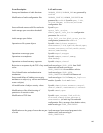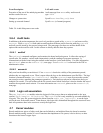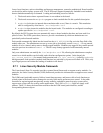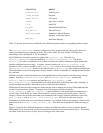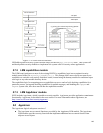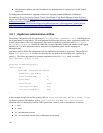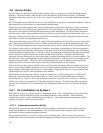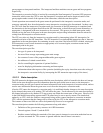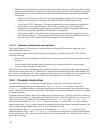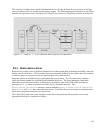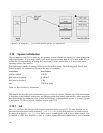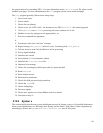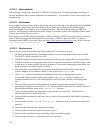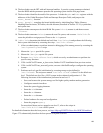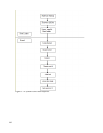guest program or interpreted machine. The interpreted and host machines execute guest and host programs,
respectively.
The interpretive-execution facility is invoked by executing the Start Interpretive Execution (SIE) processor
instruction, which causes the CPU to enter the interpretive-execution mode and to begin execution of the
guest program under control of the operant of the instruction, called the state description.
Certain operations encountered in the guest cannot be performed in the interpretive-execution mode, and
some may optionally have been designated to cause interpretive-execution to be discontinued. In these cases,
the CPU exits from the interpretive-execution mode, the execution of the SIE instruction is completed, and
the instruction in the host program that follows the SIE instruction, or that follows an Execute instruction, as
appropriate, is designated as the next instruction to be executed. This process is called interception, and it
includes saving the state of the guest in the state description and providing information about the reason for
exiting from the interpretive-execution mode.
The CPU may also exit from the interpretive-execution mode by interrupting (a host I/O interruption, for
example) execution of the SIE instruction. The SIE instruction is an interruptible instruction; that is, there are
parameters in the state description for continuing in such a way that if the host old PSW is loaded, causing the
SIE instruction (or an Execute instruction as appropriate) to be executed again, execution resumes at the
interrupted point in the guest.
The state description specifies:
• the type of system to be interpreted
• the area of host storage representing guest main storage
• the contents of some of the program-addressable guest registers
• the addresses of related control tables
• bits for controlling the operation of optional facilities
• areas for displaying information concerning and interception
• information about other aspects of the operation (including the expiry timer that causes the exiting of
the interpretive-execution facility by interrupting the SIE instruction upon expiry of the timer)
5.9.1.2 State description
The SIE instruction designates an operant called the state description, which is located in the host real storage.
Fields in the state description provide information about the guest initial state on entry to the interpretive-
execution mode, provide guest control and status information used in the interpretive-execution mode, and are
used to store information about the guest state on exit from the interpretive-execution mode.
After the CPU enters the interpretive-execution mode, it is undefined whether changes to the state description
by the channel subsystem or by another CPU will affect the guest. Fetch references to the state description by
the channel subsystem or by another CPU may or may not obtain the current state of the guest. However, bits
in the field labeled intervention requests and TCH control may be set to ones by means of an interlocked
update by on CPU, while the fields are concurrently being used to control interpretive-execution in another
CPU, with the assurance that the change will be observed by the CPU in the interpretive-execution mode.
The contents of these two fields are said to be dynamically observed or recognized.
The state description contains the following parameters along with others:
• Definition of the guest memory structure in 64 KB increments.
• General registers 14 and 15, and the PSW.
• Residue counter holding the remainder of the time spent in interpretive-execution mode that has not
yet been accounted for. This counter is ignored when the interval timer is not active.
153



